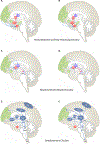Childhood maltreatment and its role in the development of pain and psychopathology
- PMID: 35093193
- PMCID: PMC10364973
- DOI: 10.1016/S2352-4642(21)00339-4
Childhood maltreatment and its role in the development of pain and psychopathology
Abstract
Childhood maltreatment represents a form of trauma capable of altering fundamental neurobiological properties and negatively impacting neurodevelopmental processes. An outcome of childhood maltreatment is the emergence of psychopathology, which might become evident during childhood or adolescence, but might also project into adulthood. In this Review, we propose a biobehavioural framework in which childhood maltreatment and the associated aberrant neurobiological mechanisms and behavioural processes additionally lead to the onset of altered pain processing and, ultimately, the existence of pain syndromes. Considering that subpopulations of maltreated children show preserved function and minimal psychiatric or pain symptoms, compensatory mechanisms-perhaps instilled by robust psychosocial support systems-are also discussed. We present validated tools and experimental methods that could facilitate better comprehension of the interactions between childhood maltreatment, psychopathology, and pain. Such tools and approaches can in parallel be implemented to monitor abnormal pain-related processes and potentially guide early intervention strategies in cases of childhood maltreatment.
Copyright © 2022 Elsevier Ltd. All rights reserved.
Conflict of interest statement
Declaration of interests JG-H has received consulting fees from Alkermes Biopharmaceuticals and Sunovion Pharmaceuticals, and serves on the scientific advisory board for Mightier by Neuromotion Labs. JU has received consulting fees from Orion Corporation. MC, MHT, HvdH, DO, and AKS declare no competing interests.
Figures



References
-
- Teicher MH, Samson JA, Anderson CM, Ohashi K. The effects of childhood maltreatment on brain structure, function and connectivity. Nat Rev Neurosci 2016; 17(10): 652–66. - PubMed
-
- Stubbs B, Thompson T, Acaster S, Vancampfort D, Gaughran F, Correll CU. Decreased pain sensitivity among people with schizophrenia: a meta-analysis of experimental pain induction studies. Pain 2015; 156(11): 2121–31. - PubMed
-
- Defrin R, Cohen Sagy N, Biran I, Goor-Aryeh I, Shai R, Ginzburg K. Enhanced pain modulation capacity among individuals with borderline personality disorder: A possible mechanism underlying their hypoalgesia. Eur J Pain 2020; 24(3): 544–54. - PubMed
-
- Defrin R, Schreiber S, Ginzburg K. Paradoxical Pain Perception in Posttraumatic Stress Disorder: The Unique Role of Anxiety and Dissociation. J Pain 2015; 16(10): 961–70. - PubMed
Publication types
MeSH terms
Grants and funding
LinkOut - more resources
Full Text Sources
Medical

